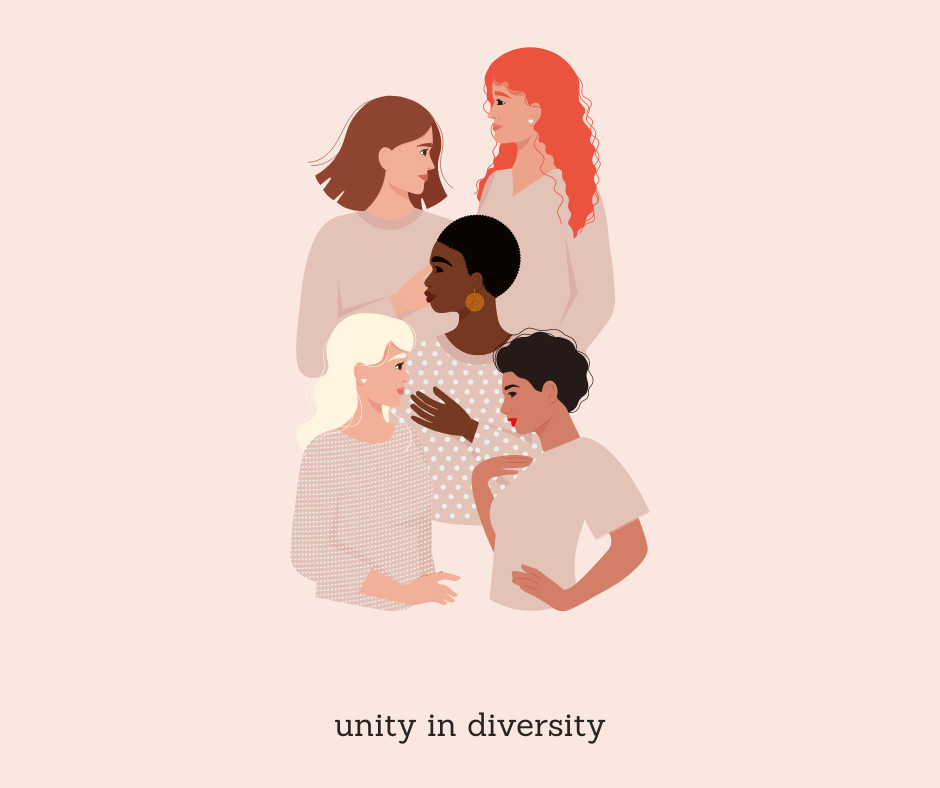What does diversity really mean?
C., an experienced freelance editor and sensitivity reader, tackles the true meaning of diversity and gives tips for being more inclusive.
As a developmental editor and sensitivity reader/editor, diversity is an integral part of my work. Diversity is about intersectional inclusivity that is authentic and genuine. An inclusivity that comes from a place of wanting to widen our knowledge of others’ lived experiences, putting in the effort to practice structural analysis, and understanding that diversity is representation, enrichment of self, and a way to shape a better world and effect change.
Authentic, genuine, intersectional, inclusive representation in stories is incredibly powerful and impactful. What we truly need to embrace is that diversity isn’t just a mindset. It’s a behavior.
To be diverse is to be kind and empathize. It’s understanding that diversity for the sake of brand safety is performance. Diversity is to acknowledge that we are all privileged, biased, and prejudiced in one way or another, and our privilege hurts others.
Because the world is a diverse place, full of a variety of beautiful shapes and forms—in people, in nature, in shared and unique experiences alike—making space for others doesn’t mean less for us, it means more for them.
Can anyone be a sensitivity reader?
Research, read, ask questions, and hire professionals. Beta readers are not sensitivity readers—neither are your marginalized friends who don’t always have the knowledge, the headspace, or the emotional capacity to be your sounding boards. Sensitivity readers are professional experts, not just the vessels of our lived experiences. Be mindful when you consume media, when you imagine, when you write, and when you edit. Don’t take criticism personally. It’s not censure. Acknowledging our privilege, our bias, our prejudice, our not-knowing or being influenced on a societal level does not make us bad people—it gives us opportunity to learn and grow. Opportunity to elevate what is created.

How to be more inclusive and think of diversity in a multifaceted way
Thank you for taking the time to read this. I want to leave you with some concrete things to support you in your journey to be more inclusive and diverse in your stories.
If you only describe skin color for Black Indigenous People of Color (BIPoC); or Black, Asian and Minority Ethnic (BAME) people; or characters who are non-white and not white-passing, you are centering white skin and whiteness as a standard and norm in your story/writing for yourself and your readers.
Here is a list of tips and things to get you thinking:
-Skin color varies a lot. Also consider your characters’ ethnic origins and heritage. Nationality or national origin is not the same as ethnicity, ethnic origins, and heritage.
-Religion is not the same as ethnicity. For example, not all Muslims are Arabs. And not all ethnoreligious people are religious. For example, being Jewish is an ethnicity but not all Jewish people are religious.
-Don’t stop at sexual identity. There is also romantic identity, gender identity, gender expression, and more. Identity and expression are spectrums. For example, butch lesbian is an expression of a sexual identity.
-Don’t stop at sexual attraction. There is also romantic and other forms of attraction. Attraction is a spectrum.
-People on the aromantic and/or asexual spectrums can have meaningful, healthy relationships. Cishetero people on the aro/ace spectrum are LGBTQIA+.
-Fat people are sexually and physically attractive. Fat is not bad or unhealthy or unfit.
-People over 35 are not old.
-Even if words like “crazy” or “normal” do not have a pejorative definition in the dictionary, many words are prejudiced and hurtful in their everyday use.
-1 in 5 people are disabled. Visibly or invisibly.
-Don’t force gender identities and gender roles on your interact-with-them-once-then-forget-them type of characters.
-Transgender people are people who do not feel they identify with the binary gender (male/female) that was assigned to them at birth. Nonbinary people are also transgender.
-Assigned Female at Birth (AFAB) transgender people don’t suddenly lose their lived experiences and knowledge of womanhood because of their gender identity and/or gender expression.
-Replace non-inclusive language with inclusive language. For example, “ladies and gentlemen” is not inclusive but “everyone” is; “guys” is gendered, but “you all” isn’t.
-Feminism isn’t reserved for women and sexism isn’t reserved for men.
There is no such thing as too much representation, but there is such a thing as glorifying your white and/or cisgendered characters by not having them acknowledge their own privilege. Don’t make these characters behave “perfectly,” especially your protagonists.
Being inclusive and diverse is not easy, and it often comes with feeling out of our depth or uncomfortable. That’s okay. We keep learning.
And if you have doubts or questions that a web search can’t answer, I am but an email away—although I cannot read for everything.
C. S. Conrad (they/them)


Lovely and insightful article, thank you!
Definitely food for thought. Thanx for taking the time to write this post. 🐺✨